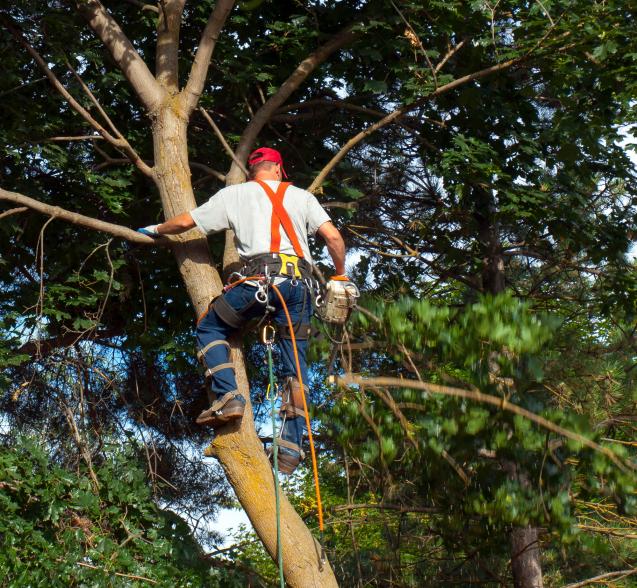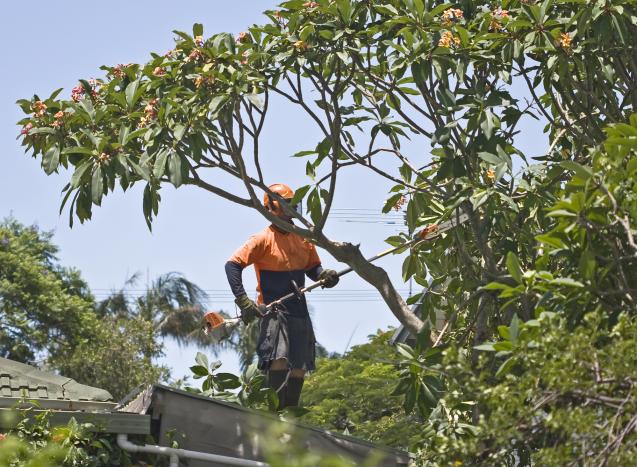
Understanding Common Tree Diseases and How to Prevent Them
Common Tree Diseases and Their Symptoms
Tree diseases are prevalent across different regions and can affect various tree species. It's crucial to recognise the symptoms early. Discolouration of leaves, unusual leaf spots, wilting branches, and abnormal growths on the bark can be telltale signs. Each disease manifests differently depending on the species it infects. Regular monitoring is essential; catching an issue early can often mean the difference between saving and losing a tree.
Fungal Infections in Trees
Fungal infections are among the most common and destructive tree diseases. Dutch elm disease, root rot, and oak wilt are prime examples. Dutch elm disease, caused by a fungus spread by elm bark beetles, can rapidly kill affected trees. Symptoms include yellowing and wilting leaves, starting from the crown. Root rot, often due to over-watering or poor drainage, results in the decay of roots, leading to stunted growth and poor tree stability. Oak wilt, prevalent in many oak species, causes leaf discolouration and wilting.
Fungi spread through spores, often via wind, water, or insects. Preventing fungal diseases involves good sanitation practices, such as removing and destroying infected plant material. Proper watering, avoiding injuries to the tree, and applying fungicides when necessary are effective preventive measures.
Bacterial and Viral Tree Diseases
Bacterial and viral diseases, although less common than fungal infections, can be equally detrimental. Fire blight, a bacterial disease, affects apple and pear trees, causing blossoms to wilt and branches to appear scorched. Crown gall, another bacterial infection, creates rough, woody galls usually at the tree's crown or roots, disrupting nutrient flow.
Viral diseases like mosaic viruses lead to a mottled appearance on leaves and can stunt growth. These diseases can be persistent, as they often spread through grafting or insect vectors. Controlling bacterial and viral diseases involves removing and destroying infected plants and using disease-resistant varieties. Sterilising pruning tools frequently can also mitigate the spread of these pathogens.
Pest-Related Tree Diseases
Pests such as the emerald ash borer and gypsy moth don't just damage trees directly but also act as vectors for diseases. The emerald ash borer, an invasive beetle, tunnels through the ash tree's vascular system, disrupting nutrient flow and often leading to death. The gypsy moth, while primarily a leaf feeder, weakens trees, making them more susceptible to other diseases and environmental stress.
Signs of pest infestations include holes in the bark, frass (sawdust-like excrement), and visible insects. Controlling pests involves a mixture of cultural, mechanical, and chemical strategies. Introducing natural predators, applying insecticides, or using physical barriers can all be effective methods. Additionally, maintaining healthy trees makes them less attractive to pests in the first place.
Environmental Factors Contributing to Tree Diseases
Environmental stressors like drought, pollution, and poor soil quality significantly impact tree health, making them more vulnerable to diseases. Drought, for example, weakens trees by limiting water availability, essential for nutrient uptake and photosynthesis. Pollution, meanwhile, can cause leaf burn and soil degradation, which can lead to root damage.
Climate change further exacerbates these issues, fostering conditions that are conducive to the spread of tree diseases. For instance, warmer temperatures can extend the lifecycle of pests and pathogens.
Creating an optimal environment for trees involves ensuring adequate water, maintaining soil health with organic matter, and protecting trees from physical damage. Minimising environmental stress can prevent diseases from taking hold.
Best Practices for Preventing Tree Diseases
Preventing tree diseases starts with regular maintenance. Pruning helps remove diseased or infested branches, improving air circulation and reducing disease spread. Proper watering ensures the tree gets enough moisture without causing root rot. Fertilising the soil with the right nutrients supports robust growth and disease resistance.
Choosing disease-resistant tree species can substantially reduce the risk of infection. Applying mulch helps retain soil moisture and prevent weed growth, although it should be done carefully to avoid creating environments conducive to pests or rot.
Finally, the role of professional arborists can't be understated. These experts can diagnose diseases early, recommend treatments, and provide tailored advice on maintenance practices. Engaging with professional arborists ensures your trees receive the best care, reducing long-term costs and preserving tree health.
Conclusion
Understanding common tree diseases and adopting preventive measures is crucial for maintaining healthy, vibrant trees. Recognising symptoms early and implementing appropriate interventions can protect your trees and the ecosystems they support. Regular monitoring, proper maintenance, and an optimal environment contribute significantly to reducing the impact of diseases on the tree lifecycle.
The benefits of healthy trees extend well beyond your property, offering ecological benefits like cleaner air and better habitats for wildlife. For those looking to take their tree care to the next level, engaging with local extension services or professional arborists provides invaluable support and guidance. Ultimately, proactive tree care fosters a healthier, more resilient environment for everyone.



